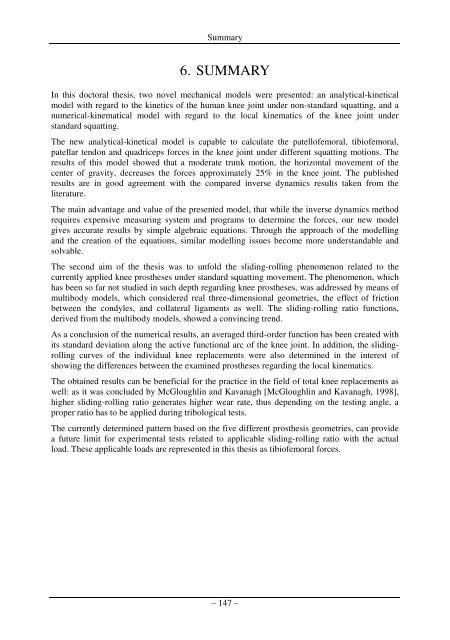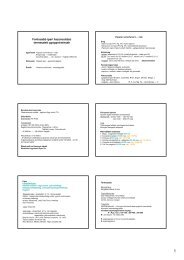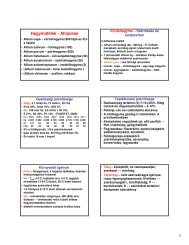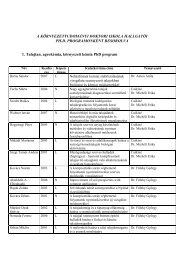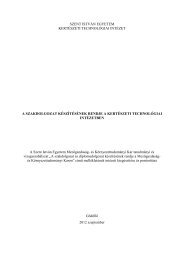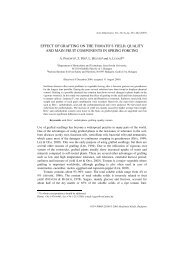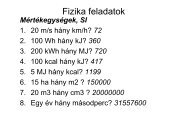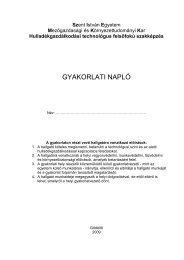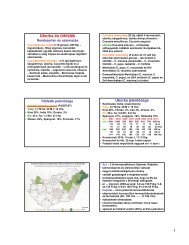PhD Fekete - SZIE version - 2.2 - Szent István Egyetem
PhD Fekete - SZIE version - 2.2 - Szent István Egyetem
PhD Fekete - SZIE version - 2.2 - Szent István Egyetem
Create successful ePaper yourself
Turn your PDF publications into a flip-book with our unique Google optimized e-Paper software.
Summary<br />
6. SUMMARY<br />
In this doctoral thesis, two novel mechanical models were presented: an analytical-kinetical<br />
model with regard to the kinetics of the human knee joint under non-standard squatting, and a<br />
numerical-kinematical model with regard to the local kinematics of the knee joint under<br />
standard squatting.<br />
The new analytical-kinetical model is capable to calculate the patellofemoral, tibiofemoral,<br />
patellar tendon and quadriceps forces in the knee joint under different squatting motions. The<br />
results of this model showed that a moderate trunk motion, the horizontal movement of the<br />
center of gravity, decreases the forces approximately 25% in the knee joint. The published<br />
results are in good agreement with the compared inverse dynamics results taken from the<br />
literature.<br />
The main advantage and value of the presented model, that while the inverse dynamics method<br />
requires expensive measuring system and programs to determine the forces, our new model<br />
gives accurate results by simple algebraic equations. Through the approach of the modelling<br />
and the creation of the equations, similar modelling issues become more understandable and<br />
solvable.<br />
The second aim of the thesis was to unfold the sliding-rolling phenomenon related to the<br />
currently applied knee prostheses under standard squatting movement. The phenomenon, which<br />
has been so far not studied in such depth regarding knee prostheses, was addressed by means of<br />
multibody models, which considered real three-dimensional geometries, the effect of friction<br />
between the condyles, and collateral ligaments as well. The sliding-rolling ratio functions,<br />
derived from the multibody models, showed a convincing trend.<br />
As a conclusion of the numerical results, an averaged third-order function has been created with<br />
its standard deviation along the active functional arc of the knee joint. In addition, the slidingrolling<br />
curves of the individual knee replacements were also determined in the interest of<br />
showing the differences between the examined prostheses regarding the local kinematics.<br />
The obtained results can be beneficial for the practice in the field of total knee replacements as<br />
well: as it was concluded by McGloughlin and Kavanagh [McGloughlin and Kavanagh, 1998],<br />
higher sliding-rolling ratio generates higher wear rate, thus depending on the testing angle, a<br />
proper ratio has to be applied during tribological tests.<br />
The currently determined pattern based on the five different prosthesis geometries, can provide<br />
a future limit for experimental tests related to applicable sliding-rolling ratio with the actual<br />
load. These applicable loads are represented in this thesis as tibiofemoral forces.<br />
– 147 –


